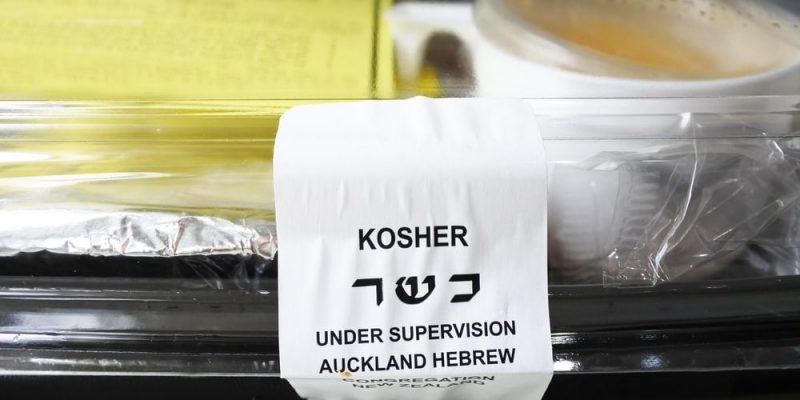We explain what kosher food is, which animals can be consumed and which cannot. Also, what is kosher certification.

What is kosher food?
Kosher, kosher or kashrut food It is one that complies with the precepts of Jewish law concerning what can or cannot be ingested (precisely, the kashrutwhose principles are detailed in the book Leviticus of the biblical Old Testament and the Tanakh). That is, it is the Jewish religious diet.
Strictly speaking, the words kosher or kosher (“convenient” or “proper” in Hebrew) are the Hebrew adjectives for what complies with the commands of the kashrutthat is, it does not contain any of the prohibited animals (considered impure and called trefa in Hebrew), and has been prepared according to the specific religious methods of yesteryear.
This distinction is so vital to Jewish religious communities that many kosher products in today's food industry have certifications and guarantees of their preparation on the packaging, so that they can be safely consumed by practitioners of Judaism.
Thus, there are kosher butcher shops, kosher restaurants, etc., whose services are demanded by practitioners of Judaism, and also by vegetarians or practitioners of Islam, when food is scarce. halal.
See also: Religious norms
Allowed and prohibited animals
The kosher diet is very specific regarding which animals can be consumed and which cannot, especially regarding terrestrial and aquatic animals. The standard indicates that All ruminant land animals that have cloven hooves can be consumed characteristics that must be given in unison. So free ranges, pigs, camels, badgers and similar animals are strictly prohibited.
As to aquatic animals, those that have scales and fins can be consumed (again, at the same time), so it is limited to fish, excluding all types of crustaceans, mollusks, marine mammals and scaleless fish.
Regarding birds, the Torah provides a list of impure animals, whose consumption is prohibited, mostly because they are scavengers or birds of prey, but leaving out many of the birds of the New World, for example, which leaves some room for interpretation. Turkey, chicken, duck and goose are generally considered kosher.
Finally, Insects are overwhelmingly prohibited, along with reptiles, amphibians and rodents. All of these prohibitions affect the direct and indirect consumption of impure animals, as well as their derived products, with the sole exception of bee honey.
Kosher food preparation

Another fundamental aspect of the preparation of kosher foods is the ideal way of culinary management. This starts with the shechitathe ritual form of sacrifice of permitted animals carried out by a butcher (shojet), who, using a sharp and flawless knife, pierces the vein in the animal's throat, allowing it to bleed to death without suffering asphyxiation.
This is a cut that causes the least possible amount of suffering to the animal. Once sacrificed, the animal must be completely bled since the consumption of blood is prohibited by the Torah, and then it must be salted. Only fish are exempt from this procedure.
Those animals that have died from natural causes or diseases are strictly prohibited. So are fats around vital organs, as well as the liver and sciatic nerve of animals.
On the other hand, the kashrut also makes explicit the prohibition of consuming meat products from mammals or birds, at the same time as milk or its derived products. Yes, eggs and dairy products, or fish and dairy products, are allowed. This separation even involves the implements used in cooking and handling the products, so that the same plate, cutlery or container cannot be used for meat and dairy products.
Similarly, at mealtime, these types of products cannot be combined, but you can consume some first, allow a period of several hours to pass, or wash your mouth in some cases, and then consume the other. A tiny portion of milk or its derivatives in a dish is enough to completely turn it into a dairy food, in the eyes of the public. kashrut.
Lastly, according to kosher standards The preparation of wine requires that the grapes not be crushed with the feet (because they are considered impure),
Kosher certification

kosher certification It is an international guarantee seal for the consumption of foods and products handled according to kashrut instructions.
It usually appears as a letter “U” enclosed in a circle (in the case of the Orthodox Union certification), a “P” enclosed in a circle (for being food suitable for Easter) or various designs with the letter “K” (for kosher, obviously). There are various kosher certification agencies in the world, each with its emblems and verification methods.
Continue with: Taboo
References
- “Kashrut” on Wikipedia.
- “When is a food kosher?” in La Nación (Argentina).
- “What is kosher?” at Oukosher.org.
- “What is kosher certification?” at International Dynamic Advisors.





